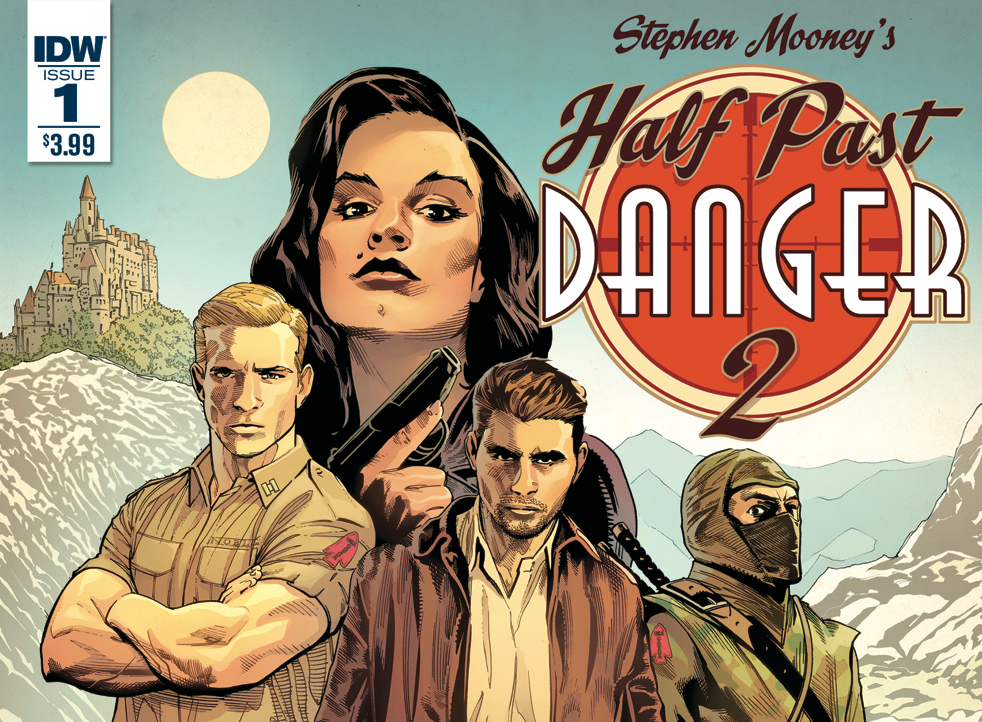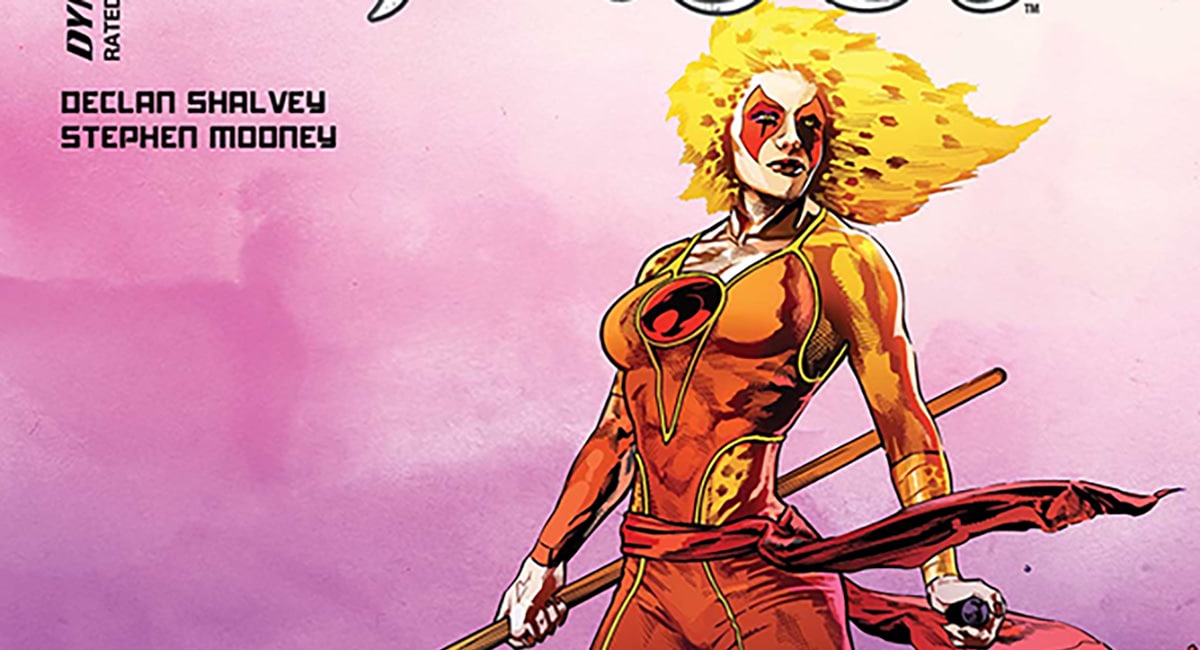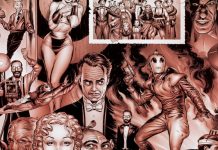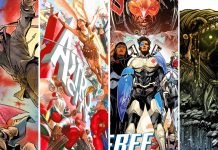I was a latecomer to Stephen Mooney’s work, first viewing it in The Dead Hand, which I read in preparation for an interview with its writer Kyle Higgins. That series had an extremely unique style, with pop art action sequences unlike anything else in comics. I was ecstatic when Mooney agreed to an interview and gave me the opportunity to learn more about his storytelling sensibilities, career choices, and the burgeoning Irish comics community. Keep reading to learn what he has to say.
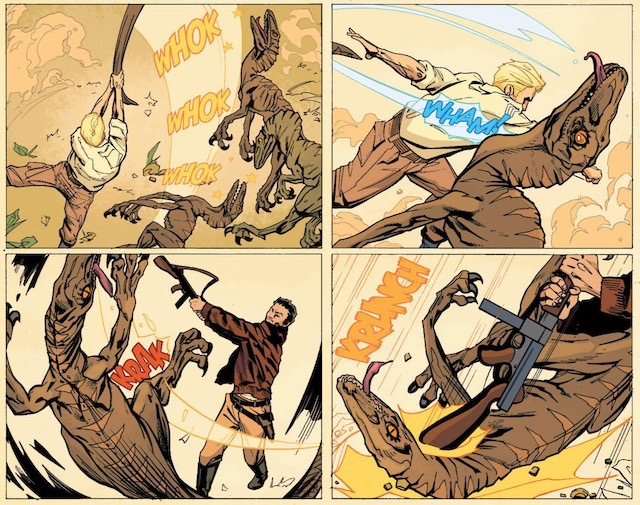
Half Past Danger was, I believe, your first book completely in the driver’s seat, as both the writer and artist. What made it the comic you most wanted to make?
It was the first book I wrote and drew, yeah. It had been burning a hole in my imagination for a long old time; years before I actually got around to mustering up the confidence to tackle it. The mash-up of all of my favourite genres and storytelling tropes was the big attraction for me – getting to throw all of my personal crap against a wall, just to see what might stick.
That swashbuckling, action-adventure style story was something I felt was missing from the market and by far my personal favourite brand of storytelling having grown up on Tintin, Raiders of The Lost Ark, etc. I felt like it was the one mechanic that I had a really solid handle on and something that I could definitely swing for the fences with.
How has writing and drawing two volumes of Half Past Danger helped you grow as a storyteller?
Oh, immeasurably. The seamless cohesion of having one person execute the entire storytelling process demonstrated to me exactly what was possible with this medium. I would sketch set-pieces right onto the script as I wrote, and there was never a need for me to go into any huge detail on shot descriptions, since I knew exactly how this particular writer envisioned the entire process! Even lettering the books taught me a lot about panel-to-panel story progression and how to better lead the eye around the page. All really invaluable stuff.
I’ve just finished a new Star Trek story where I also handled everything but the colours myself, and the feeling was exactly the same. Unlimited creative freedom.
This process also taught me precisely how much visual description to include in a script that I’d write for another artist to draw; how to give a quick impression of what could look cool, but also leave plenty of leeway for that artist’s own visual interpretation. Nothing worse than getting a script from a writer that simply dictates how every panel should look – that isn’t true collaboration.
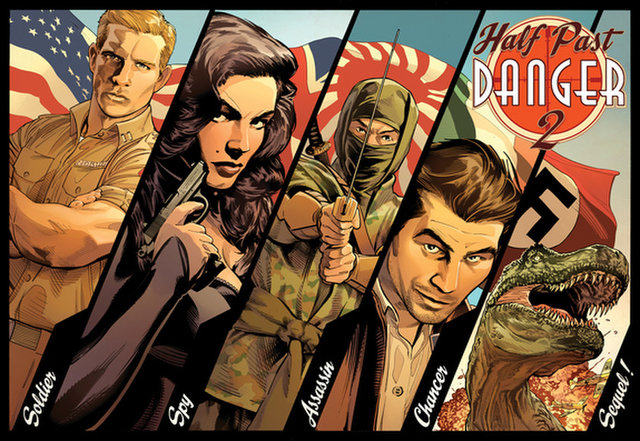
How did it find a home at IDW?
Two words: Chris Ryall.
Chris had given me my first shot at American comics way back in 2006 on a CSI story. Still one of my very favourite editors to work with to this day; Chris is ridiculously savvy and always available to assist in any capacity. Being an excellent writer himself, I knew his story input would be aces. The fact that I already had a long and trusted working relationship with Chris and IDW meant that they were my first port of call when looking for a home for my baby. Their production values are top-notch, and I was especially keen on those beautiful hardcover collections that they’re well-known for
Why did you only color the first issue?
Man, I wish I could’ve done more. My aim when setting out was to do everything. Write, pencil, ink, letter and colour the entire book. In the end I only managed around 35 interior pages and all of the covers, colour-wise. The reason being time. It takes me so long to colour my work, often even longer than it takes me to draw the page! I realised after finishing the first issue that the book would take years to come out if I didn’t look for some help. Thankfully I’d been friends with a certain ridiculously talented young up-and-comer named Jordie Bellaire, and she was happy to lend me a hand. In the end, it was a great boon for the book to have her contributions (which were huge) and I really think she added an awful lot to the overall feel of the project. She really understood that ‘Spielbergian’ storytelling style, as she liked to call it. Her storytelling instincts were fantastic too, as she’s since gone on to prove with several excellent writing projects of her own.
Jordie was too busy (and I couldn’t afford her anymore!) when Volume Two rolled around, but I was twice blessed to know the equally talented Irish colourist Tríona Farrell, who took over interior colour duty and absolutely nailed it, making the book her own. Tree has since burst through the stratosphere with all of her recent work at Marvel, but she promised to come back for volume three of HPD, so I’ll be holding her to it!
Did you learn a lot seeing how Jordie Bellaire interpreted your palette for the rest of the series?
Oh yes. Like I mentioned above, Jordie added much to the overall tone and atmosphere of the book with her incredible palettes and colour choices. You can’t measure that kind of element; it just infuses the pages with a certain vibe that adds hugely to convincing the reader that they’re there with the characters. It’s tough to describe; but you’d notice straight away if it wasn’t present. I Can’t thank Jordie enough for her contribution.

In The Dead Hand Jordie used sequences themed around one color. Did you feel like that gave those pages a different kind of energy?
100%. That was all Jordie, and at first Kyle and I didn’t know how to envision what she was suggesting – but that all changed as soon as we saw the action sequences coloured.
Jordie infused them with a real immediacy and urgency that made those sequences sing. It felt like the way she slightly offset those harsh, stark colours made the pages almost vibrate with energy. Shows you exactly what a good colourist can bring to the table; an end product that you just don’t see coming, but wonder how the hell you didn’t come up with yourself in the first place. Cracking stuff, on her part.
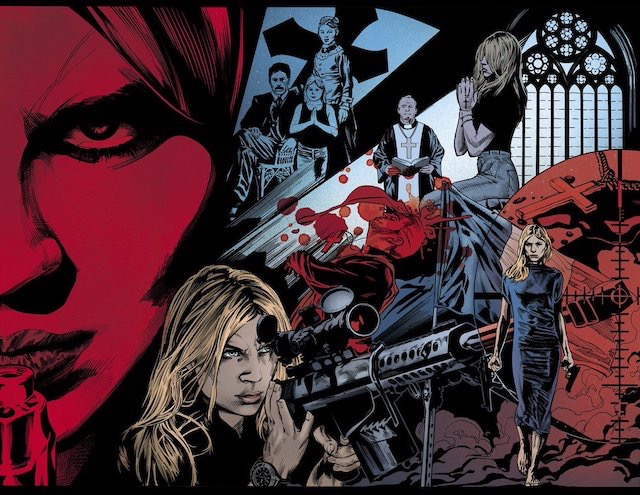
What goes into layout out and illustrating those double page spreads?
Those are a total joy for me to do, and something I’m going to be trying to incorporate more into my work as I go. I wanted to be a film poster artist when I was very young, inspired like so many others by incredible artists like Robert McGinnis and Drew Struzan, among many others. Those spreads are kind of my answer to that style of montage artwork. Kyle would come up with five or six character beats that described the origin of each of our major protagonists and I then would go about coming up with visuals to match. I had total freedom and leeway with them; Kyle was great to work with that way. We did the book old-skool Marvel-style, where I’d work off plots and then Kyle would come back in to my finished artwork and add the final dialogue. Great fun and very collaborative.
On the DPSs in particular, I’d just go to town on stuff I thought was cool! Lots of dramatic, moody shots of the characters being bad-asses, basically. Pepper that with little story elements that suggested character traits and motivations and we were golden. They seemed to go down really well, and I loved doing them. Some of my favourite work.
Kyle Higgins mentioned that, outside of those spreads, he didn’t write tight breakdowns for The Dead Hand. Did you appreciate getting more control over formatting the pages than you might have on another project?
Yep, I really did. It lets you invest that much more of your own storytelling sensibilities and gives you way more control of the pacing and narrative, but on the con side it takes a lot longer to do. Luckily I had tons of lead time on Dead Hand, since we knew going in that it was going to be incredibly labour-intensive. But that’s what it takes to make the world entirely convincing, and I’m perfectly cool with that.
A lot of great artists come from Ireland. There’s even an Irish Comics Wiki. Is there a vibrant creator community there?
Yeah! Back in the nineties we had a smattering of great artists come from here, like Killian Plunkett and Dermot Power on Star Wars. It was them and a couple of Northern Irish guys like John McCrea and Will Simpson that made great strides for us. In the last 10-15 years though, there’s been a real surge in Irish pros. Myself, Dec Shalvey, Will Sliney, Nick Roche, Stephen Thompson, Len O’Grady, PJ Holden and other young punks all ganged up to form an online community known as The Eclectic Micks. We all shared that goal of breaking into the American comics market, and having seen the previous guys like John McCrea on Hitman and other high-profile books, we knew it was possible.
We competed and pushed each other to be better and faster and eventually we all found our way in. In turn now there’s a new generation of Irish creators coming hot on our heels and landing great gigs all over the place – people like Tríona Farrell, Eoin Marron, Dearbhla Kelly, Robert Carey, Rebecca Reynolds and many more. Dec and Jordie played a huge role in many of these new creators’ careers, in many cases mentoring them directly and recommending them for gigs with big publishers. If I was being really generous, I’d say that Dec is the single biggest reason that the Irish scene is doing so well currently. But I’m not, so screw that guy!
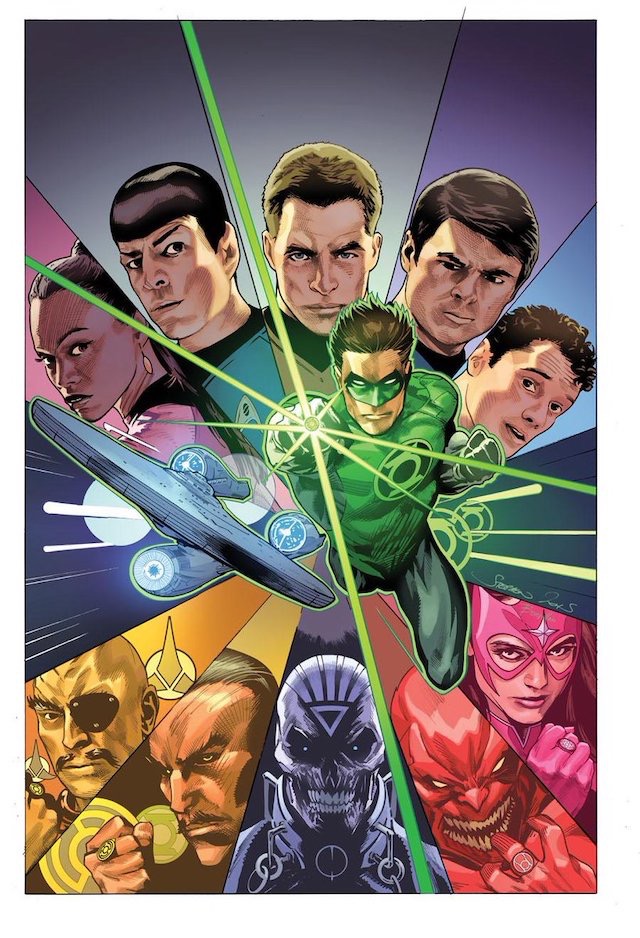
I’m sure you get a lot of offers, but artists can usually only work on one comic at a time. How do you choose the projects you work on?
Firstly, how COOL is the project? Does it get my juices flowing? Is it something I’ve long harboured ambitions to work on? I’m just wrapping an arc on Dynamite’s main James Bond book, and that’s a great example of something that had long been on my bucket list. I’ve always been a big Bond guy and Agent Huntington-Moss from Half Past Danger is basically the love child of James Bond and Catwoman. So I wasn’t gonna turn that one down. Same with the Star Trek story I’ve just wrapped; I’m a massive Trek nerd.
Then, less idealistically; how much does it pay? I have a new son and a mortgage, so it isn’t just about fun factor anymore. It has to be financially viable.
Next – what’s the schedule like? So many of the projects people take on are dictated by availability and timing. This is possibly the largest single factor.
Lastly – who would I be working with? Just like there are a long list of bucket list characters, there’s and equally long list of people I’d like to work with. Writers and artists I really respect, and editors I wanna keep working with – assuming they’ll have me!
You can follow Stephen on Twitter @stephen_mooney and through his website HalfPastDanger.com. Check out his creator-owned series digitally and at your favorite comic book shop.
Matt Chats is an interview series featuring discussions with a creator or player in comics, diving deep into industry, process, and creative topics. Find its author, Matt O’Keefe, on Twitter and Tumblr. Email him with questions, comments, criticism, etc. at [email protected].


